Table of Contents
ToggleOverview
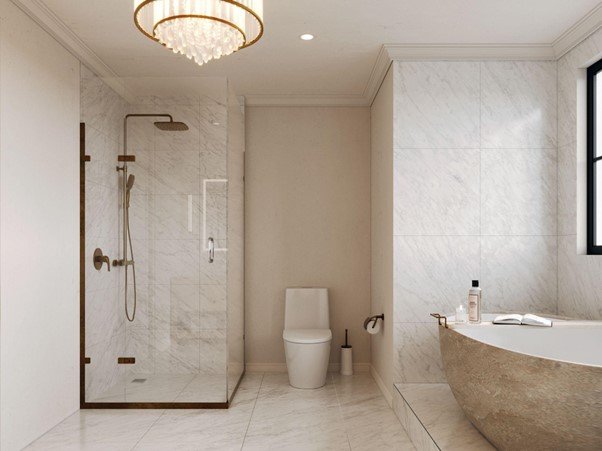
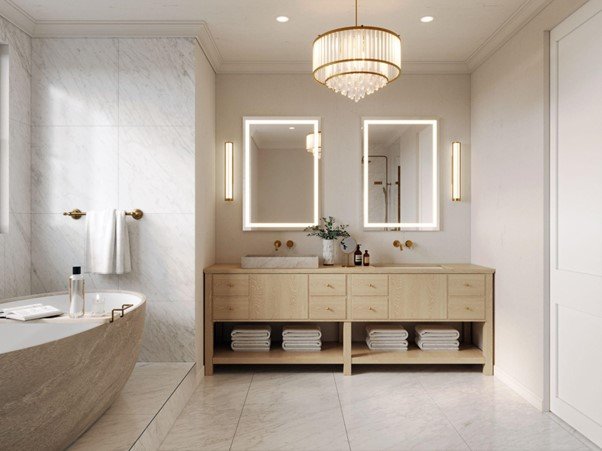
In luxurious houses, worth is attached to every single detail. So, spaces such as bathrooms, where function coexists with aestheticism, are designed in an optimal way. Just recently, a Boston based home developer approached us to design 3D visuals of how the high-end bathroom would look in reality. Our task was interesting since the Client had provided only an approximate sketch with basic sizes and information about the sketch 1 and a half inches. Thus, we developed a concept, communicated with the client, and elegantly produced two beautiful 3D depictions of the high end bathrooms design that was created primarily by the client.
The objective of this blog is to show the course of events in the project, discuss the advantages of rendering to the contractor and perform the analysis of the techniques of interior design construction used in internal bathroom renders. We will also provide answers to common questions regarding three-dimensional rendering of structural spaces– bathrooms in particular – and discuss of sorts advantages of the said techniques over conventional planning designs in the context of space visualization.
The Project: 3D Bathroom Visualizations for Boston Home Renovator

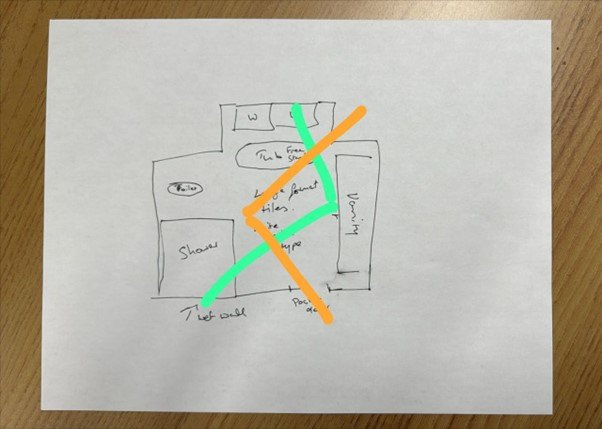

This project started when the customer, a home builder from Boston, approached us with an idea sketch of his desired bathroom. Though it incorporated some measurements and basic ideas, it was just a rough concept and not a fully developed design. This was a rough concept that we had to further develop into an intricate and realistic 3D model.
Step 1: Researching and Finding Inspiration
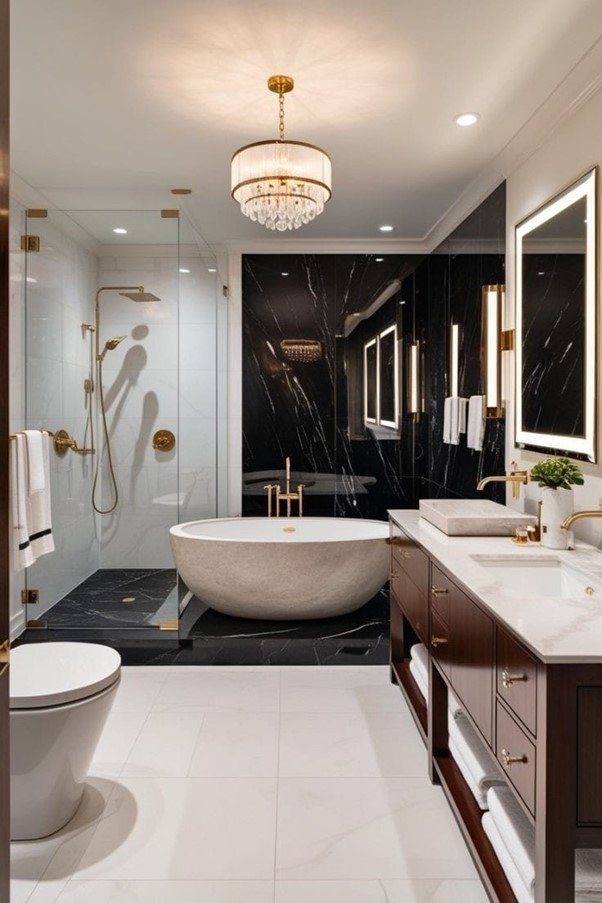
Given that the client only had a rough sketch of things, it was up to us to imagine the bath and send them a design photo as an example. This stage is essential in ensuring that we do not go too far from what the client wants. Thanks to the inspiration image, it was vivid how the client envisioned the bathroom including the hues, textures, and style.
Once the client accepted the picture, we went to the next stage: the draft renders.
Step 2: The Draft Renders Creation
Having collected all the relevant details, we proceeded with designing the 3D model of the toilet. It encompasses everything from the arrangement of the plumbing outlets, the position of the sanitary wares, and the specification of the finishes used. Between three to five days, we sent the first batch of the draft renders with the client’s response.


The bathroom, which is a complete contrast from the rough sketch provided at the beginning, made it possible for the client to see what was designed from the initial renders. At this stage, the client had a couple of changes in mind but these were never too drastic, just some tweaks to enhance the final design slightly.
Step 3: Corrections and Last Renders

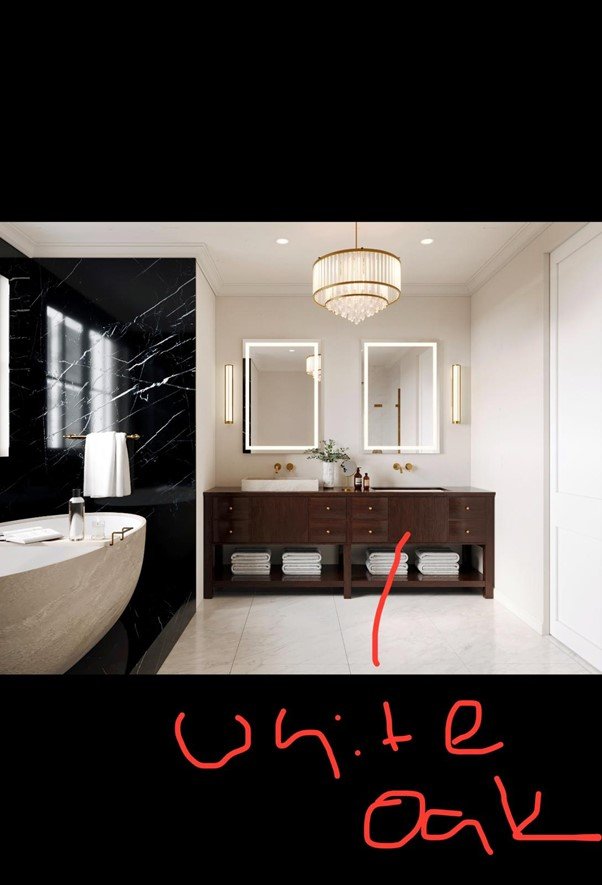
The second the client sent us the amendment details, and we incorporated them straight away and issued revised visuals within two days. The end image was exactly how the client imagined the space to be, who wanted it to exactly be luxurious. Not only were these final renders intended for completion of the design but also for the effective promotion of the property.
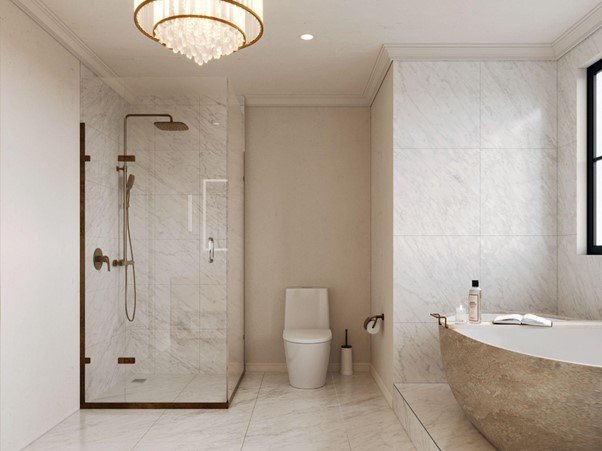

Why Home Developers Can’t Ignore the Benefits of 3D Renderings
3D renderings are very useful for home developers, especially when considering luxurious areas such as bathrooms. This is how they can help make a difference:
1. Better Design Development
One major benefit of 3D renderings is the pre-construction visualization of a space. For home developers, this equates to being able to predict how a room will look after all the components, from the fixtures to the materials to the lighting, have been incorporated into the design. In the case of our Boston bathroom project, the first primary design concept was smoothed to be a more detailed representation which helped the contractor give more relevant design ideas.
2. Further Collaboration
When working on luxury projects, developer-architect-clients relationship should flow easily. Because there is no such detail of natural language in this context, 3D renderings are very useful tools. In our project, for example, the inspiring image and the draft renders helped the developer put forward his idea to the design team and the client.
3. Accelerating the pace of Decision-making
The three dimensional views are so informative that they assist in hastening the decision-making process. In the case of the Boston bathroom design project, for instance the client was presented with the complete design and was able to make further changes without visualising the toilet design solely or looking up the 2D layouts only. This minimizes too many back and forth communications and enables projects to progress smoothly.
4. Aids in Selling and Marketing
To home builders, three dimensional depictions are equally helpful in marketing. A photo of an exquisite bathroom or a kitchen which has been rendered in the 3D format can be used in pamphlets, real estate advertising and social media to look for potential buyers. With such beautiful images and video promo, the building developers can capture the attention of the customers in a quite competitive proportion of the market.
5. Economical and Affordable
By making the stakeholders in the construction process know where the possible problems in the design may arise, 3D renderings are definitely going to save the developers time and money in the long run. For instance in our Boston project, the developer had to revise the placements of the bathrooms based on the renders which prevented unnecessary revisions during actual works.
The Procedure For Rendering of the Bathroom Interior
The process of making a 3D render of interior spaces, such as bathrooms, is composed of multiple steps. This is how we handle each project:
Step 1: Gather Information
In the first place, we aim to get as much information as possible from the client. This would normally include conceptual plans, such as:
Rough outlines or sketches
Estimations on scale size
Material specifications (if available)
Referencing images (when the client has a particular style in mind)
In cases where clients do not have a developed specification, we start with a rough sketch and do the work from inspiration images, as was the case in the Boston bathroom project.
Step 2: Form the 3D Model
As soon as all the data is collected, detailed information about the features of the intended space is provided to the specialists, and tattooed diagrams of the room’s internal building are included.
Step 3: Provide Draft Renderings
Within the period of three to five days from the presentation of the 3D image to the client, we provide the draft renders. The images clearly demonstrate the style and its specific features – the location of the different parts of the future bathroom, and the client can make proposals concerning changes, if any.
Step 4: Modifications and the End Product
Literally, if the client needs changes, we make these changes and finish the renders in a one to two day period. The last touches are photorealistic images that can be employed in any of such areas as presentation, marketing or as the finished image of the design.
How 3D Renderings Help Visualize Spaces Like Bathrooms
In the interior of luxurious homes, the bathroom is the area where convenience and style are of utmost importance. With 3D renderings, developers and designers are able to imagine how these areas would look unlike in the case of traditional plans.
1. Proper Lighting and Textures
Bathrooms usually have a combination of textures like tiles, stone, glass and metal. 3D renderings can present the combination of these materials in a lighting condition realistically, allowing clients to understand how they will most probably ‘experience’ the space.
2. 3D Rendering for Visualization of Small Spaces
Bathrooms in general take up the smallest areas in the house, this makes it difficult for one to visualize the point of union for design elements. Developers are able to appreciate the use of 3D renderings; how even the tiniest of areas can be designed to enhance the aesthetic and the practical aspect of the structure.
3. Highlighting Luxury Elements
The luxury freestanding bathtubs, rain showers, and custom vanities must find their place in the picture. Such exclusive fittings are easily integrated in 3D rendering which provides a simpler way for developers to offer a luxurious experience to the end clients.
Frequently Asked Questions (FAQs)
A bathroom rendering requires more than just a final picture. We usually need rough sketches or 2D plans, basic dimensions, material specifications (if available) and any inspiration pictures. If you don’t have detailed specifications, we can work from beautiful images only as well.
No, an exact 2D plan is not a necessity. In order to make 3D render of an object we need a rough sketch with very basic dimensions.
Though inspiration isn’t a design, it gives us an idea of how to best meet your needs. So the answer is yes.
First versions of the drafts are delivered usually within three to five days, and if any changes are to be done, we can do in a day or two.
Conclusion
In the modern era of construction, developers have considered the integration of 3D rendering in their design processes as an indispensable asset. These line of visuals are a step further in understanding the design, enhance interaction, fast track procedures and serve remarkable useful promotional purposes. In the Boston’s bathroom renovation project, the builders used the 3D visualizations to transform an idea in a schematic form into a photo realistic mode of design in a few days.
If you’re an inspiration for developing residential buildings and wish to create beautiful images of your bathroom designs, or any room interior, you can consult our experts, who will address your Needs promptly. By having a few steps, low completion times and even better output quality, such renderings can help your projects shine and bring creativity to maturation. Contact us now to find out how we can make your dreams come true!

